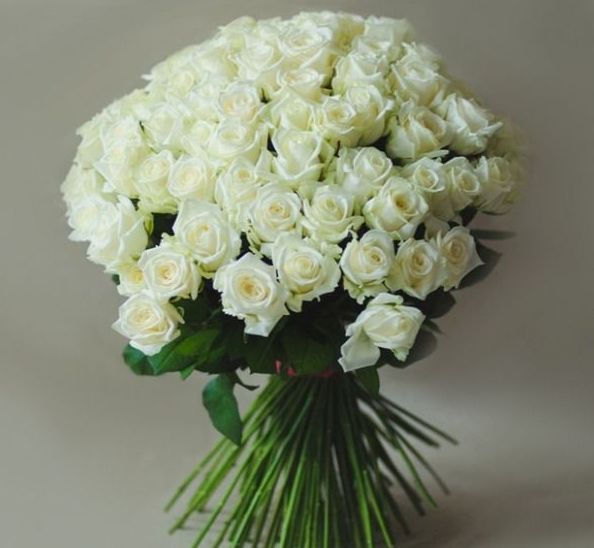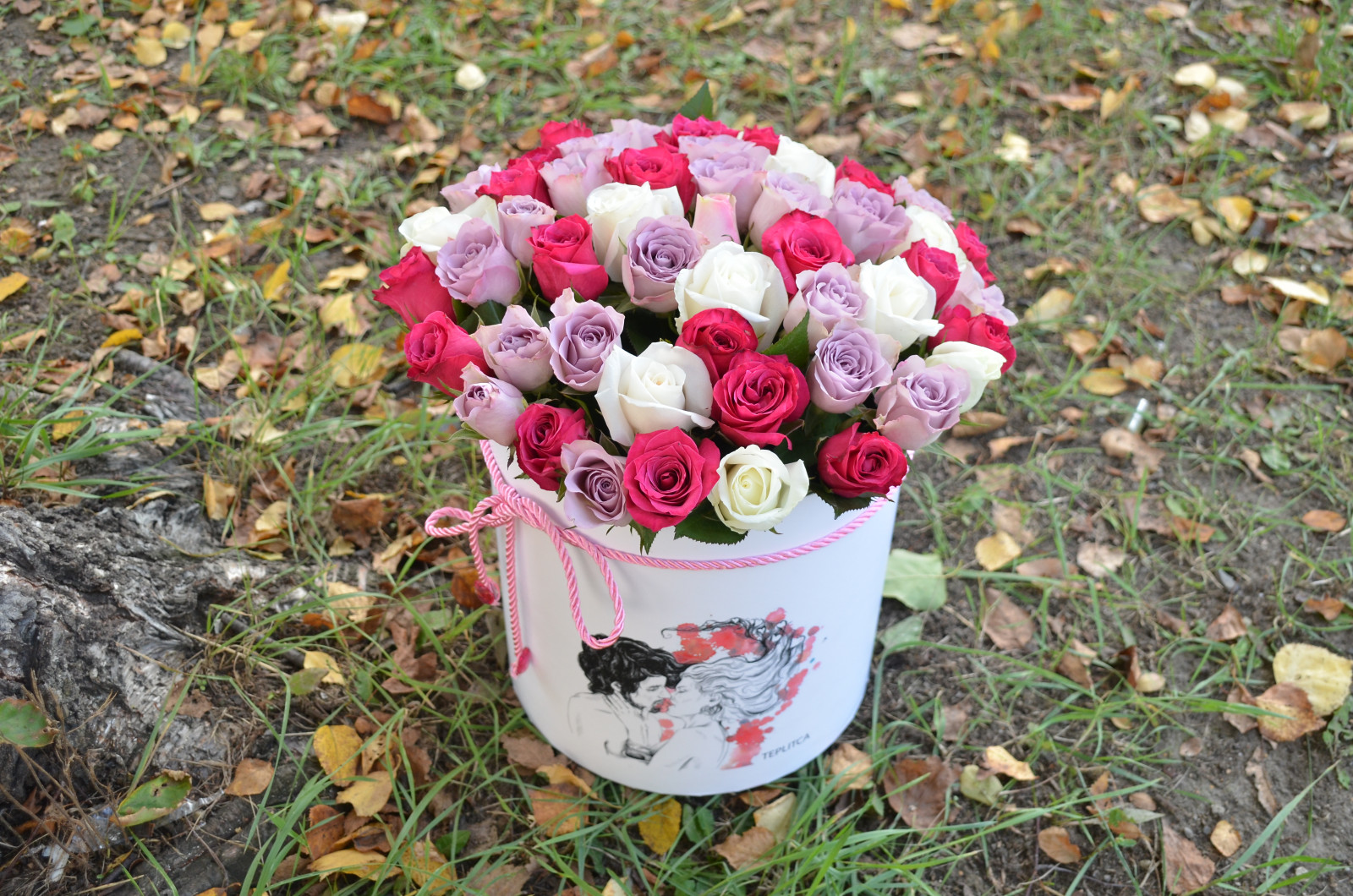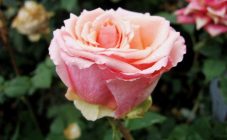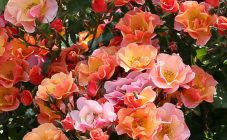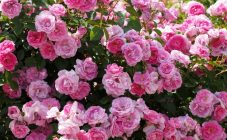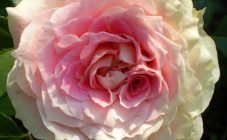Content:
The Kenyan rose has an incredible variety of colors and an attractive appearance. This variety got its name from the place of origin, because it originally appeared in Kenya, which has a warm and humid climate, which is ideal for a rose.
Rose Kenya can grow both in mountainous and flat areas, the main thing for this plant is a warm climate.
Description
General description of Kenyan roses:
- There are two types of plants: single or in the form of a bush with many flowers on each. Kenya rose bush is especially suitable for completing the look of a garden or improving the overall appearance of the yard of a private house.
- In average, the shrub reaches a height of half a meter, both single colors and bush, and with proper care it can grow up to 70 centimeters.
- As already mentioned, the bushes have many flowers that densely cover the branches, as well as rich green foliage.
- The aroma of the plant is pleasant and delicate.
- The plant can be grown from both seeds and cuttings, and the root system will be radically different for everyone. Those grown by seed or cuttings have roots deeply embedded in the soil, which distinguishes them from grafted plants, the roots of which are located close to the surface.
- After cutting, the Kenyan rose retains its former appearance for a long time, therefore it is ideal for making bouquets.
The main varieties of the Kenyan rose
The main difference between the varieties is the color scheme. But breeders are working on improving existing varieties and breeding new ones, so over time, more and more new varieties appear. Currently, the following main varieties are distinguished:
- Reds, which, as the name implies, have red shades of colors. This type rarely has the shape of a bush, often it is still a single plant, reaching a height of almost 1 meter. These include the following varieties: Aper class, Red Ribbon, as well as Rhodes and Everred.
- Pink, characterized by a small height, in the area of half a meter. The most popular in this category are Aqua, Revive and Pink Rhodes. It should be noted here the only representative, Honolulu, which is a single very large flower.
- Whites, distinguished by their incredible beauty and purity, are the ones most often used for bouquet compositions. The most popular varieties are Akito, Proud and Atena.
- Orange and yellow, which are the pride of breeders, because it was quite difficult to breed such a variety, so they are unique. Moreover, there are separate subspecies of the variety, in which the color has a gradient color (mix), which flows from one color to another. For flower arrangements, the following varieties are used: Atomic, Mario and Syringe. All of them are incredibly delicate and have a mild delicate aroma.
- Two-tone, which look unique and unrepeatable, perfectly complement the floral arrangement. Most Popular: Belrose and Navarra.
Scientists are not satisfied with what has already been achieved, thanks to which there are now green and blue roses, as well as flowers of delicate pastel and cream tones.
Features of planting and care
The following points are the key to proper growth and development:
- Landing.
- Top dressing.
- Watering.
- Follow-up care.
Kenyan shrub roses are more unpretentious than single plants. However, the general boarding rules are the same:
- You need to choose the right place, because Kenyan roses need warmth, but exposure to direct sunlight can cause burns on the petals. Therefore, you should find a place in partial shade, and closed from strong winds and heavy rainfall. Simply put, you need the side of the house where exposure to direct sunlight occurs in the morning.
- The optimal time for planting is spring, and late, when the soil is already warm enough.
- Planting mainly occurs by cuttings or transplanting plants previously grown from seeds. Before planting, you must carefully inspect the plant and cut off any damaged parts.
- It is necessary to plant plants at a sufficiently large distance, especially for bush plants. Also, the hole should be dug deep to provide sufficient space for root growth.
Before planting, it is important to prepare the soil, supply it with the required amount of mineral and organic fertilizers. First you need to add manure to the soil. After planting, after a while, fertilizers are added that will protect the rose from pests and some diseases.
In addition to fertilizers, experts advise introducing top dressing, the main purpose of which is to supply the soil with minerals, to help in the process of growth and flowering.
But proper planting is not enough, you need to care for Kenyan roses regularly. The main criteria for proper care are:
- Loosening in order to deliver sufficient oxygen to the roots.
- Weeding is a very important part of grooming as growing close to other plants can disrupt the functioning of the root system.
- Watering, which must be done once a week, is abundant enough.
- Pruning every spring after the first buds appear.
- Treatment of diseases.
- Competent preparation for winter, shelter and strengthening of the plant.
Major diseases and pests
The following diseases are found in Kenyan roses:
- Mealy rose. The main symptom is the appearance of white bloom on the surface of leaves and buds. It is caused by a fungus. For the fight, spraying the surviving plants with Bordeaux liquid or a solution of ferrous sulfate is ideal, but the damaged plants must be burned.
- Black spot, expressed as black spots on leaves that fall off prematurely. In order to cure it, it is necessary to cut off all diseased leaves, burn them and treat the plant with a foundationol solution.
- Gray rot caused by excessive watering or soil that is too rich in moisture. In this case, only prevention, carried out in advance, will help, especially if rainy weather is foreseen. To do this, you should treat the roses with a manganese solution.
In addition to diseases, pests can also harm the plant:
- Spider mite.
- Green aphid.
- Leaf roll.
- Pink scale insect.
- Medvedka.
Rose Kenya will be a wonderful garden decoration, and also suitable for selling and making flower arrangements, the most important thing is to follow the rules of caring for this type of plant.
